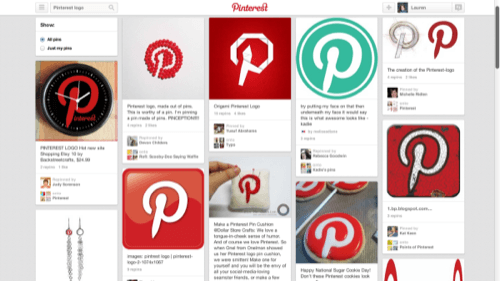
Want to make an app that works on top of Pinterest? Be prepared for some hard work.
Developers who want to make their apps work with Twitter or Facebook can do so easily, since both companies have long offered tools for just that purpose. Meanwhile, Pinterest has been promising its long-awaited public API since March 2012—with nothing to show for it so far.
See also:Pinterest Developers, After Years Of Waiting, Can Take Hope
An API, or application programming interface, is a set of rules that permit software programs or service to talk to other programs or services. They’re essential tools for developers who want to build apps on top of social media quickly and efficiently. An API would allow developers to build apps that work on top of the Pinterest platform, the way TweetDeck works on top of Twitter or Missing E works on Tumblr.
Building such tools on Pinterest is obviously a lot harder without a public API. And that presents a bigger problem for business than for casual users. Most consumer apps simply add more features to an existing service, whereas apps for businesses provide tools that they can’t live without. For many companies, there’s no reason to have a social media presence if there’s no way to count their fans and track what they’re doing.
So while many developers can just sit back and wait for a public API to be released, those cater to business analytics have had to jerry-rig solutions of their own. And businesses pay good money for these tools, because, well, they basically don’t have any other choice if they want the data.
Re-Inventing The Wheel
Without an API, developers can try to simply scrape data from a service—generally by using programs that crawl a social network and index what they find for developers to analyze. Over the several years of waiting for Pinterest to provide an API, developers who want to provide Pinterest analytics to businesses or brands have been forced to do just that.
Data scraping is generally considered a last resort. While an API allows analytics trackers to collect data in real time, scraping is slower, vulnerable to countermeasures and prone to unexpected error. So even the most sophisticated apps built on scraped data have accuracy problems, and many of the early players in Pinterest app development have phased out their efforts or closed down entirely. The few key players that remain have had to evolve their tactics.
Here’s how two of the largest Pinterest analytics trackers, Curalate and PinLeague, have managed to keep enterprise customers happy with homespun solutions in place of a public API. (Neither Curalate nor PinLeague would tell me exactly how they scrape data from Pinterest; since there’s no standard API their techniques are trade secrets.)
Curalate
This marketing and analytics suite works with more than 300 brands like Saks Fifth Avenue and the Gap. Customers pay big money to use Curalate’s tools, on average between $1,000 and $5,000 per month.
What they’re paying for is a solution to tracking Pinterest traffic that has nothing to do with scraping textual data. Instead, explained CEO and co-founder Apu Gupta, Curalate uses something it calls “pixel recognition”:
Descriptions change, URLs get modified, and other metadata gets erased. But the image remains relatively constant. So what we do is memorize the images themselves in what amounts to a giant game of memory. We scan every pixel of every image we encounter—nearly 40-50 million images daily—and check to see if we’ve ever seen that image before. If we have, we know what brand that image belongs to and we can increment the brand’s analytics accordingly.
Gupta often finds that the data his customers initially ask him to track isn’t what truly measures success on Pinterest’s visual platform.
“Most people pinning Gap products have nothing to do with what the Gap is pushing out on its Pinterest profile,” he said. “The majority of Gap products on Pinterest come from users pinning them from external sites to their own boards.”
Offering a free trial and monthly analytics beginning at just $29 a month, PinLeague is Curalate’s more economy-minded cousin, targeting small businesses as well as enterprises. The company tracks analytics for more than 2,000 brands, including Target and Nike.
Beyond its audience and price, it’s difficult to compare to Curalate or its other competitors. That’s because each one company has chosen to track a unique set of metrics. According to CEO and co-founder Danny Maloney, PinLeague offers its customers different metrics mixes, depending on their needs:
Brands have their own theories on what important metrics are. Some brands want to grow their audience. Others want to cultivate smaller, closer audience. Others want to run a contest and generate headlines with it, while still others want to make revenue and see conversions from this platform.
If 2012 was the frontier of Pinterest analytics, said Maloney, then 2013 is the Wild West. Only a handful of analytics vendors remain, and they’ve all scattered in different directions.
Perhaps that’s because, without an API to dictate which metrics Pinterest itself believes ought to be tracked to measure success, PinLeague’s success relies on its being able to track the metrics customers ask them to track. That will all change when Pinterest releases its API, but Maloney claims not to be worried.
“If and when Pinterest does release an API, it’s frankly going to make the entire field move faster and help third party developers do what’s hard or impossible to do right now,” he said.
Now that it’s no longer a question of “if,” it’s entirely possible that the days of PinLeague and Curalate are numbered. They’ve each cornered a chunk of the market by managing to develop adequately reliable analytics without an API. An API could help developers accomplish much the same thing with much less effort (and quite likely at a lower cost, too).
But first, Pinterest has to actually put its API where its mouth is. Stay tuned.










